For a country that never tires championing the cause of Afghan Pashtuns and eulogising the valour and traditions of Pakistani Pashtuns, the warped strategic vision of the national security state structure of Pakistan has inflicted the greatest damage to the identity, society, culture, traditions and most of all, posterity, of the Pashtuns. On the pretext of fighting for their interests, the Punjabi dominated Pakistani establishment has systematically reduced a once proud Pashtun community into pawns on the strategic chess-board.
Either by design or by default, the policy framework adopted by the Pakistani establishment since 1947 has foisted the most rabid and reactionary leadership on the Pashtuns and denied space (political and social) for the rise of a liberal and enlightened leadership that could help advance the Pashtun society in the modern world. While it can be argued that the Pakistani establishment has not exactly done anything better with the other ethnic groups and communities inside Pakistan – the regression of the entire Pakistani society is there for everyone to see – none of the other groups have paid as heavy a price as the Pashtuns in the last four decades. Perhaps, Pakistan's policies are Punjab’s revenge for the historic depredations by the Pashtuns in the Land of Five Rivers.
As a deliberate policy, the Pakistani establishment has kept the Pashtun Tribal belt (FATA) as a sort of anthropological zoo where the social, cultural, educational and political development of the people remained rooted in medieval times and practises even as adjoining areas – the so-called ‘settled areas’ – showed some semblance of modernity. To an extent, this Pakistani policy of making FATA into a ‘reservation’ gained legitimacy from the needless romanticization of Pashtun tribalism by the British who portrayed the Pashtuns as free-spirited, noble savages who lived by their own code of ethics and tolerated no attempt to curb their autonomy, much less their independence. The natural consequence of letting FATA become the ‘wild west’ of Pakistan was that it remained under-developed, under-educated and under-represented. Among the worst sufferers were women who were treated no better than chattels.
With no economic activity worth the name, FATA transformed into a haven for criminals from all over Pakistan who sought refuge in this area and conducted their nefarious trade – smuggling, gun-running, narcotics, kidnapping, car theft etc – with complete impunity. Administratively, FATA was a dark zone lorded over by a rapacious and unaccountable local bureaucracy that trampled human rights of the people under the draconian Frontier Crimes Regulation. By not allowing political parties to operate in FATA, the Pakistani establishment sought to depoliticize the region. The vacuum thus created was filled by the nexus between the mafia and the mullah, which suited the Pakistani establishment perfectly as it allowed the exploitation of the Pashtun tribesmen as cannon fodder for the various misadventures of the Pakistani state, starting with the ‘tribal invasion’ of Jammu and Kashmir in 1947 and going on to facilitating the rise of the Taliban to exercise control over Afghanistan and continuing to support them to this day.
The policies of the Pakistani establishment, or what a Pakistani columnist calls ‘deep state’, were equally pernicious in the so-called ‘settled areas’ – the province of NWFP which has now been renamed Khyber-Pakhtunkhwa. Soon after Partition, the ‘deep state’ fostered reactionary and conservative politics in the province by undermining the most potent political force in the province – the liberal, secular Khudai Khidmatgars led by the redoubtable Khan Abdul Gaffar Khan, also known as Frontier Gandhi. In 2002, the Pakistani establishment manipulated the politics to ensure that the MMA – an alliance of six religious parties which wags called the ‘mullah-military alliance’ – formed a government in the province. It was the force of circumstances and the terrible administration of the MMA that for the first time since Partition, liberal, secular and progressive parties came into power in Khyber-Pakhtunkhwa with the ANP and PPP forming a coalition government.
But no sooner did the government come to power, the ‘deep state’ started making trouble for it. For the first one year, the ANP-PPP government was unable to function properly because of the insurgency in the Malakand division – Swat and its surrounding districts. Rendered helpless by the inaction of the Pakistan army and ‘deep state’ against its Taliban proxies who were running amok in Swat, the ANP-PPP government was forced to enter into peace deals with the Islamists. It was only when the Islamists went out of control of the Pakistan army and reached within 60 miles of Islamabad causing a huge international outcry that the Pakistan army moved against them. The result of the military operations was that effective control over the province went back into the hands of the ‘deep state’, and the civilian government was reduced to nothing more than ‘show boys’ of Pakistani style democracy. In effect, the preponderance of the military in Khyber-Pakhtunkhwa has disenfranchised the Pashtuns.
If this is what the Pakistani ‘deep state’ has done to people – Pashtuns – whom it calls its own, the effect of its policies, tactics and strategy on the Afghan Pashtuns has been cataclysmic. Even before the Soviet invasion of Afghanistan, Pakistan had started to promote and prop up Islamist forces in Afghanistan. These Islamist clients of Pakistan’s ‘deep state’ were portrayed as ‘Afghan nationalists’ and ‘freedom fighters’ when the ‘Afghan jihad’ against the Soviets started. The propaganda at that time was that it was not Islamic zeal but opposition to a foreign occupying force that was driving the ‘mujahideen’. This ‘jihad’ devastated Afghanistan, especially the Pashtun dominated southern and eastern parts. The entire social structure in these areas broke down and whatever development had been initiated over the years was completely decimated, pushing these areas back into the dark ages. After the Soviet withdrawal, Pakistan tried to impose its own favourite, Gulbadin Hekmatyar, on Afghanistan. While this was done on the grounds of protecting Pashtun interests, Hekmatyar’s maniacal obsession for ruling Afghanistan ravaged whatever little remained in Afghanistan after the ‘jihad’. As if the destruction wrought by Hekmatyar wasn’t enough, his failure to win power made the Pakistanis unleash an even more brutal, reactionary and radical Islamist force on Afghanistan – the Taliban.
The Taliban fit in extremely well in Pakistan's fundamental approach on the Pashtun question which is that the Pakistani establishment only recognises either ultra-conservative Muslim nationalists or else radical Islamists as the ‘sole spokesmen’ or representatives of the Pashtuns. In the case of the Taliban too, it is not the Pashtun ethnicity of the Taliban that makes Pakistan support them; it is the Islamist ideology of the Taliban - an ideology that rejects ethnic identity – that has so endeared the Taliban to the Pakistani establishment. In other words, Pakistan backs the Taliban not so much because they represent Pashtun nationalism but because they reject Pashtun nationalism, which since Partition has been a bugbear of the Punjabi dominated Pakistani establishment. In the Pakistani scheme of things, anything that emphasizes Pashtun identity, culture, language, traditions must be suppressed or metamorphosed to serve the Punjab determined interests of Pakistan.
The depredations of the Taliban are all too well documented and need no repetition. Suffice to say, the brunt of the distorted worldview of the Taliban was felt by the Pashtuns. The events following 9/11 attacks in the US led to the liberation of Afghanistan from the yoke of the Taliban. The Pakistanis however continued to root for the Taliban and tried to impress upon the Americans to give a stake to the ‘moderate Taliban’ in the new dispensation in Afghanistan. Although the Americans refused to bite the ‘moderate Taliban’ bait, they foolishly turned a blind eye to the double game that the Pakistanis started playing with them – becoming allies in the war on terror while at the same time providing support, sustenance and sanctuary to its proxies – the Taliban/Al Qaeda and other sundry terrorist groups – against whom the war on terror was being waged. Once again, the area worst affected by this ‘strategic game’ of the Pakistani establishment was the Pashtun belt of both Afghanistan and Pakistan.
Pakistan could have changed course after 9/11 and let Afghanistan prosper in a peaceful and progressive environment. But the Pakistani strategists were not ready to let go of their Islamist proxies who they considered as guarantors of their quest for ‘strategic depth’ in Afghanistan. After allowing the Taliban to recover and regroup for a couple of years after 9/11, Pakistan unleashed them on Afghanistan from around 2004. Needless to say, the brunt of the Taliban resurgence in Afghanistan was felt in the Pashtun dominated areas in the south and east of the country. Consequently, economic and political development in the Pashtun belt of Afghanistan suffered in direct proportion to the escalation of violence by the Taliban. By directing the Taliban attacks on aid and development workers, the Pakistanis were in effect ensuring that the Pashtun belt lagged behind other parts of Afghanistan where reconstruction activity was taking place at a feverish pace.
The deprivation of the Pashtuns was a deliberate policy aimed at enhancing the sense of grievance and alienation among the Pashtuns, which in turn would lead to more recruits for the Taliban. Hence a vicious cycle was introduced in which terror strikes on development activity led to a halt in reconstruction work, which in turn impaired development of the Pashtun areas and resulted in growing anger among the people who felt they were being marginalised by the non-Pashtun dominated dispensation in Kabul. This anger was exploited by the Taliban to win over support from local communities which led to a further deterioration in the security situation. The Taliban also ensured that all efforts at providing governance in the Pashtun areas came a cropper. The direct impact of the relentless targeting of government officials was to render the administration dysfunctional and the resultant vacuum was filled by the Taliban who set up their own parallel administration for dispensing what they called justice and settling disputes between members of local communities.
While the attack on the administration, and on aid and development workers, could be explained away as part of the war strategy against foreign forces and their collaborators, the destruction of the schools and denial of education to girls can only be seen as a war on the Pashtun people. The only purpose of attacking the schools was to deny the future generations of Pashtuns even a modicum of secular education that would equip them to walk in step with rest of the world. As far as the Taliban are concerned, the Pashtun children did not need anything more than a grounding in religion through a madrassa education. The fact that madrassa educated Pashtuns could neither compete nor coexist with other ethnic groups is perhaps part of the calculus of denying the Pashtuns a proper education.
At the political level also, the Taliban have ensured the marginalisation of the Pashtuns by coercing them to not participate in the elections. With many Pashtuns not casting their votes in the recently concluded parliamentary polls, candidates belonging to non-Pashtun ethnic groups managed to win even in Pashtun dominated areas. For instance, in Ghazni, the Hazaras managed to win most of the parliamentary seats because of the low voter turnout among the Pashtuns. In the Afghan National Army and Police, all efforts to correct the ethnic imbalance by increasing the Pashtun representation has been stymied by the Taliban and their Pakistani backers who have threatened the Pashtuns with reprisals against their families and communities if they joined the ANA and ANP.
The irony is that even as they have taken all possible steps to ensure that the Pashtuns remain ignored and marginalised in the efforts to rebuild the Afghan state, the Taliban have used this very factor to manufacture resentment among the Pashtuns against the post-Taliban dispensation in Afghanistan. It is not as though the rest of the world or ethnic groups in Afghanistan were conspiring against and denying opportunities to the Pashtuns; it was in fact the so-called Pashtun Taliban who created conditions under which the Pashtuns were sidelined from enjoying the fruits of development.
The havoc wrought on the Pashtuns by the Pakistani sponsored and supported Taliban and the systematic infusion of radical Islamist ideology in the Pashtun areas has made every Pashtun a suspect in the eyes of not only other ethnic groups in Afghanistan but also in rest of the world. The result is that centres of Pashtun culture like Kandahar and Jalalabad have been left untouched by development when compared to cities in the North and West of Afghanistan. The Pashtun areas, which at one point of time were the most developed parts of Afghanistan, are today in danger of becoming another FATA, a zone of global instability and an epicentre of global terrorism. And yet, the Pakistanis are continuing to push for ‘reconciliation’ with the Taliban, and in a repeat of how the backed Hekmatyar’s case in the 1990’s are projecting the Taliban as Pashtun nationalists rather than radical Islamists.
In their compulsive obsession to control the Pashtun politics and prevent any assertion of Pashtun nationalism, Pakistan may have created a situation where regardless of whether the Taliban come to power in Afghanistan or there is the emergence of a Pashtun dominated entity in that country, the ramifications for Pakistan will be extremely serious. The impact of both a radical Islamist Taliban dispensation in Afghanistan or a virtual partition of Afghanistan with a ‘Pashtunistan’ straddling the border with Pakistan could well lead to the unravelling of the Pakistani state as we know it. The only way to avoid such a development is for Pakistan to end its double game with the Pashtuns and the Americans and allow the emergence of a liberal, progressive and secular Pashtun leadership to emerge in Afghanistan, a leadership which is at peace with other ethnic groups inside Afghanistan and is friendly with other countries in the region. But if this doesn't happen, then perhaps the time has come to start writing the epitaph of Pakistan.
---------------------------------------
Published Date : 3 February, 2011

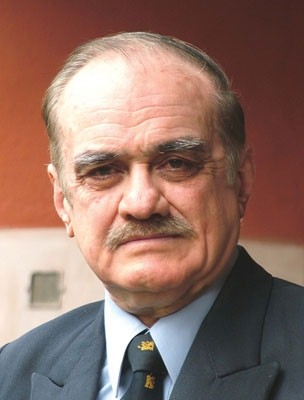
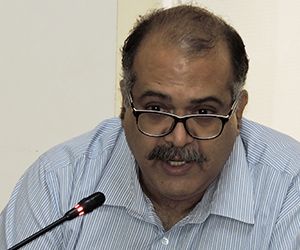

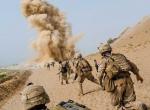
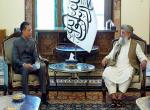

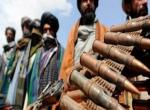
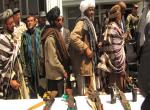


Post new comment